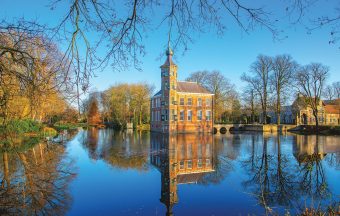In modern cities, it is somewhat utopian to expect complete harmony with nature. Urban and social life have distanced people from their cultural heritage, while nature in many areas has been depleted and now requires support to regain its balance. In an era of health, climate, and environmental challenges, the concept of National Park Cities (NPC) offers a vision of urban environments that are greener and healthier. Although they are not traditional national parks, these cities draw inspiration from their values and guiding principles.
The Origin of the National Park City Concept
The idea of the National Park City was first proposed in 2013 by Daniel Raven-Ellison, a geographer and National Geographic explorer. After visiting several national parks across the United Kingdom, Raven-Ellison began to imagine how London could be transformed into a city that functions as a national park. He launched an initiative called the National Park City Foundation, which was formally registered in 2017 as an independent charitable organization funded through grants and donations. Through this initiative, London enhanced its green spaces, protected local plant and animal species, and encouraged citizens to participate in preserving nature and cultural heritage. Particular attention was given to promoting sustainable mobility, such as walking and cycling, as well as educating communities about the importance of green areas. After several years of campaigning led by Raven-Ellison and supported by collaborators, London was officially declared the world’s first National Park City in 2019.

This success served as an inspiration for a broader initiative. The experience of experts from more than 50 countries contributed to shaping the Universal Charter for National Park Cities, which emphasizes improving human health and wellbeing, preserving biodiversity, protecting habitats and public spaces, encouraging outdoor life, culture, art, play, walking, and cycling, as well as supporting local food production and responsible consumption. It particularly highlights the importance of shared decision-making, learning, and acting in harmony with nature and human relationships.
The National Park City Foundation Today
Today, the Foundation provides support, coordinates the global vision, launches campaigns, establishes partnerships, and offers advisory services to cities. The National Park City model functions from the bottom up — driven by citizens, organizations, and local authorities who wish to make their city greener, healthier, and fairer. A city begins its candidacy by signing the charter, developing its vision and plan, and demonstrating broad community support.
The Foundation then provides guidance and mentorship, and after evaluating the city’s activities, grants official status. Once recognized, the city becomes part of the global National Park Cities network and is obliged to continuously improve the quality of life and strengthen the connection between people and nature. The Foundation has set a goal for at least 25 cities to gain National Park City status by 2025. Although this goal has not yet been fully achieved, in addition to London, three other cities have received this status, with several more currently in the application process.
IN FOCUS:
- ABB Home Automation in the Service of Energy Efficiency
- Brutalism And Its Identity In The Era Of Architectural Uniformity
- Climate Vulnerability in Bosnia and Herzegovina – What Awaits Urban Areas
Examples of National Park Cities
Adelaide was declared a National Park City in December 2021 — the first in Australia and the entire Southern Hemisphere, and the second in the world to receive this recognition. The whole process was initiated and led by Green Adelaide, the organization responsible for managing the natural environment of the metropolitan area. Over the next three years, the city worked on improving urban greenery and biodiversity protection, including: strengthening tree protection and designing green spaces through the Urban Greening Strategy; preserving and gradually phasing out single-use plastics; and restoring coastal habitats. The Government of South Australia has also developed new Biodiversity Legislation to protect local species and ecosystems better, and established the First Nations Voice in Parliament to ensure that Indigenous communities have direct participation in decision-making.
Breda became the first National Park City in the European Union in 2025. The city aims to become an “urban area within a natural park,” with the active participation of its citizens. It has set the goal of becoming one of Europe’s greenest cities by 2030, supported by municipal urban planning policies. Breda has long been developing greening projects — about 60 percent of its area consists of green spaces, small forests, walking and cycling paths, canals, and community food production initiatives. One successful example is the Green Quays project, which revitalizes the River Mark and transforms its banks into green spaces, reintroducing nature to the city’s medieval core. Breda also strives for CO2 neutrality by 2044, supporting citizens through subsidies for green roofs, façades, rainwater systems, and courtyard greening.
Chattanooga became the first National Park City in North America in 2025, setting seven key goals: facilitating access to nature, promoting outdoor activities, protecting and educating about the environment, fostering inclusive and sustainable development, strengthening community and culture, supporting local food and agriculture, and advancing art and creativity. Over the years, the city has transformed from an industrial center into a place deeply connected with nature, through active citizen engagement and strong local government support.
Biodiversity preservation and the enhancement of urban greenery are evident in projects such as the restoration of Montague Park and River, clean water initiatives, and animal conservation programs at the Tennessee Aquarium Conservation Institute and the Hellbender Research Lab at the local zoo. This success is rooted in collaboration among diverse stakeholders. In addition to these cities that have already achieved National Park City status, several others — including Rotterdam, Cardiff, and Glasgow — have been nominated and are currently in the process of applying for this designation.
Prepared by: Katarina Vuinac
The story was published in Energy portal Magazine GREEN ARCHITECTURE



